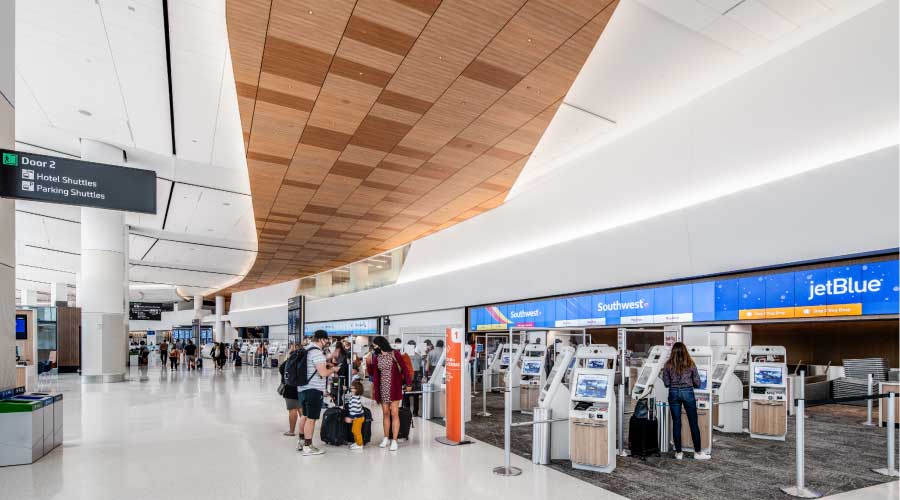Green Technology: Solar Wall Impacts Heating Loads
The project went beyond replacing the mechanical and electrical systems, as the city used the building as a green laboratory for a particular sustainable technology — a solar wall. The wall is not the same as a photovoltaic roof, which generates energy. Instead, it acts as a buffer between outside air and the facility's HVAC system.
"It's a passive solar system," Miller says. "It's not generating power. This is intended for pre-heating outside air before it gets into the HVAC system. We just thought it was something we should look at in a larger scale."
While Miller believes the solar wall is reducing heating loads, the city is working with Minnesota State University, Mankato, to more closely analyze its performance.
"It's been very, very successful," Miller says. "We know it's working. We know it's working better than our expectations, but we don't have any measurement of that. We are actually working with Minnesota State, Mankato. Their mechanical engineering department is doing a year-and-a-half data investigation into the performance of this particular piece of equipment. We're really anxious to see what the actual numbers are."
The building also features a passive lighting-control system the facilities department has tied into the DDC system to improve monitoring.
"We've got occupancy sensors, but then we also can control the lights at our central location," Miller says. "So we have the ability to turn things off and set things back, based on occupancy. Certain groups in the police station work on normal business hours, and other groups are more 24-7. So we have the ability to manipulate the lighting in the building that way."
The city gives serious consideration to sustainability during renovation and construction projects. Modlin attends weekly meetings on green building practices, and the entire maintenance and engineering staff is more aware of the impact facilities can have on the environment. That awareness did exist in 2004 and 2005 when the renovation and addition took place, as the project team employed sustainable material-management practices and implemented sustainable technologies listed above.
In fact, after the city completed the project, Miller assessed the way the project would have measured up to LEED had it been vying for certification. Miller says it would have earned enough points for a LEED Silver certification.
"Shortly after this building was built, in 2006 and 2007, the city formally adopted LEED as its building standard and LEED Silver as our minimum level of quality," Miller says. "This was one of two (projects) that we used as stepping stones."
Related Topics:















